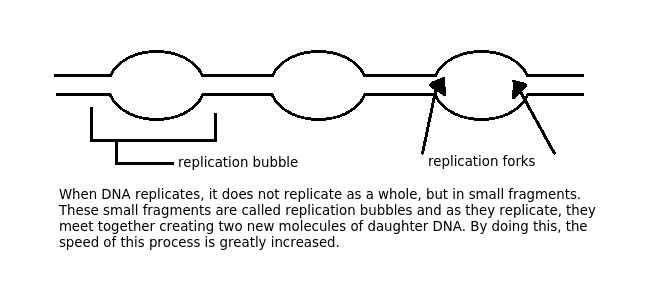In this tutorial you will explore how DNA makes a copy of itself.
DNA replicates in a semiconservative manner, meaning that the two new DNA molecules consist of the orginal strand and a new strand.

- First the enzyme, helicase breaks the hydrogen bonds between the base pairs of the original strand of DNA.
- Attached to the DNA stands are single strand binding proteins (SSB) which prevent them from annealing.
- Primase, an enzyme adds RNA primers (short segments of nucleotides) which are used as the starting point of DNA replication.
- Complementary nucleotides are added by the enzyme, DNA polymerase III.
- The enzyme, DNA ligase, by making a phosphodiester bond joins the okazaki fragments forming a continuous strand of DNA.
- DNA polymerase I, an enzyme then removes the RNA primers and replaces them with the appropriate nucleotides.
- DNA replication is not a flawless process however, thankfully DNA polymerase I also checks replicated DNA. When a mistake is encountered the bad nucleotide is cut out and replaced with the correct nucleotide.
Gyrase is another enzyme that is used in bacteria to reduce the strain on the DNA strands when unwinding.
DNA replication then occurs in the 5' to 3' direction.

Since DNA replication occurs in the 5' to 3' direction, this means that one strand is built towards the replication fork. It is called the leading strand.
The strand that is built away from the replication fork in short okazaki fragments is called the lagging strand.
The process is bidirectional.

Note: If a word ends with the suffix '-ase', it means that the molecule is an enzyme and it serves to catalyse reactions.
The replicated DNA is called daughter DNA as replicated cells are called daughter cells.

Why is DNA replicated?
- To allow for sexual/asexual reproduction.
- To replace old/damaged cells.
- To allow for growth.
- To improve the efficiency of the cell. If the cell grows too large diffusion cannot occur quickly, which prevents the cell from obtaining essential nutrients in an efficient manner.